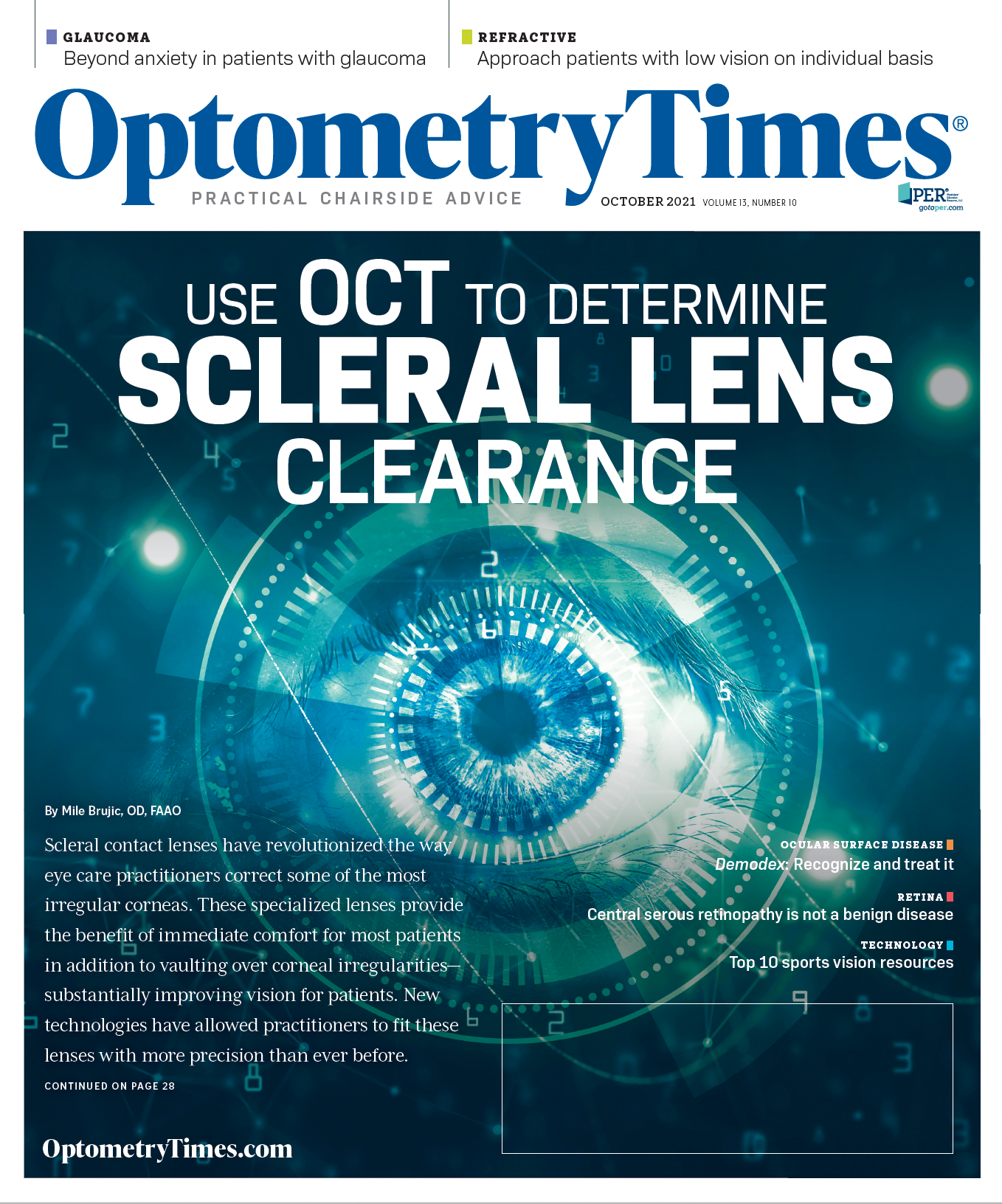- Therapeutic Cataract & Refractive
- Lens Technology
- Glasses
- Ptosis
- AMD
- COVID-19
- DME
- Ocular Surface Disease
- Optic Relief
- Geographic Atrophy
- Cornea
- Conjunctivitis
- LASIK
- Myopia
- Presbyopia
- Allergy
- Nutrition
- Pediatrics
- Retina
- Cataract
- Contact Lenses
- Lid and Lash
- Dry Eye
- Glaucoma
- Refractive Surgery
- Comanagement
- Blepharitis
- OCT
- Patient Care
- Diabetic Eye Disease
- Technology
Demodex: Recognize it and treat it
How carpenter bees got me thinking of follicular mites


I was born and raised in East Harlem in New York City. Now I live in Brooklyn, New York.
However, I do own a small, Cape Cod–styled home on Kent Island in Maryland. Kent Island was the first permanent English settlement in North America and remains almost as rural as when the first settlers tilled the soil and culled for oysters in the Chesapeake Bay.
Signs of infestation
Why do I tell you this? Well, each July our family spends a week or so in our Maryland home. During our stay, we plan visits from the arbor specialist, John, to cut back and feed the 100-year-old mulberry tree in our yard; the John Deere machine specialist, Dave, to overhaul and repair the tractor; the well man, Charles, to check the water pump; Chuck, the sewage man, to monitor the drain fi eld; and Ed, the exterminator, to inspect the house for obvious reasons.
This year it took all of 20 seconds for Ed to announce that we had an infestation of carpenter bees in our pool house—20 seconds. He simply walked around the pool house, pointed his finger, and said, “There.” Shocked, we realized that every day we walked past the telltale signs of infestation, oblivious to the damage that was being caused by the bees drilling into the support beams of the building. Ed’s experienced, professional, and trained eye made a diagnosis so obvious that I was embarrassed I did not recognize it.
It struck me that we as eye physicians are in some ways like Ed, looking for signs of infestation—not of carpenter bees, but of other critters that have made haven in our patients, namely the follicular mite Demodex (folliculorum or brevis).
Zhao et al found the association between Demodex infestation and blepharitis to be statistically significant by meta-analysis.1 Demodex also has been associated with trichiasis, 2 meibomian gland dysfunction,3 conjunctival inflammation,4 and corneal pathology.5
Furthermore, infestation of Demodex mites induces a change of tear cytokine levels, IL-17 especially, which causes inflammation of the lid margin and ocular surface.6
Just as tiny, cylindrical bored holes in our pool house lumber and a spray of carpenter bee debris on my pool screen were signs of bees working away on the premises, eyelashes with cylindrical dandruff are pathognomonic for ocular Demodex infestation.7
Extensions of the problem
A recent study examined Demodex folliculorum (D folliculorum) survival time in various cosmetics, ie, powder cream, mascara, and lipstick. Study authors concluded that follicular mites’ ability to survive in cosmetics could allow shared makeup to be a vector of D folliculorum.8
Patients with Demodex blepharitis have varying degrees of bacterial microbiota imbalance in the conjunctival sac. It is suggested that Demodex serves as a vector to transfer both skin and environmental flora to the eye.3
There is a hypothesis that Demodecidae species plays a role in viral transmission. It seems likely that arthropod-coronavirus interactions may take place through the molecular attraction forces between the chitin on the exoskeleton of mites commonly found on human skin and the lipids present on the viral envelope of COVID-19.9
Eyelid margin care and rescue
In the setting of overall good health, it is my personal belief backed with evidence that daily eyelid margin cleaning maintenance is key to controlling Demodex overpopulation and its downstream pathology in the lid margin area.10 Mechanical cleaning of the lid margin, eg, professional microblepharoexfoliation (BlephEx) in conjunction with patient at-home daily lid margin cleaning (iLidClean, We Love Eyes Eyelid Margin Cleansing Brush, NuLids) removes sensitizing lid margin biofilm, makeup, allergens, and Demodexrelated debris. Commercial lid cleaning solutions are helpful to this process. In development from Tarsus Pharmaceuticals Inc, lotilaner ophthalmic solution 0.25% (TP-03), an eye drop demonstrated to cure collarettes and eradicate Demodex in clinical trials, is poised for drug approval.
Remain vigilant
My point is this: Be like Ed. Recognize Demodex. Treat it.
References
1. Zhao YE, Wu LP, Hu L, Xu JR. Association of blepharitis with Demodex: a meta-analysis. Ophthalmic Epidemiol. 2012;19(2):95- 102. doi:10.3109/09286586.2011.642052
2. Gao YY, Xu DL, Huang lJ, Wang R, Tseng SC. Treatment of ocular itching associated with ocular demodicosis by 5% tea tree oil ointment. Cornea. 2012;31(1):14-17. doi:10.1097/ ICO.0b013e31820ce56c
3. Yan Y, Yao Q, Lu Y, et al. Association between Demodex infestation and ocular surface microbiota in patients with Demodex blepharitis. Front Med (Lausanne). 2020;7:592759. doi:10.3389/fmed.2020.592759
4. Liu J, Sheha H, Tseng SC. Pathogenic role of Demodex mites in blepharitis. Curr Opin Allergy Clin Immunol. 2010;10(5):505-510. doi:10.1097/ACI.0b013e32833df9f4
5. Kheirkhah A, Casas V, Li W, Raju VK, Tseng SC. Corneal manifestations of ocular demodex infestation. Am J Ophthalmol. 2007;143(5):743-749. doi:10.1016/j.ajo.2007.01.054
6. Kim JT, Lee SH, Chun YS, Kim JC. Tear cytokines and chemokines in patients with Demodex blepharitis. Cytokine. 2011;53(1):94-99. doi:10.1016/j.cyto.2010.08.009
7. Gao YY, Di Pascuale MA, Li W, et al. High prevalence of Demodex in eyelashes with cylindrical dandruff. Invest Ophthalmol Vis Sci. 2005;46(9):3089-3094. doi:10.1167/iovs.05-0275
8. Sedzikowska A, Bartosik K, Przydatek-Tyrajska R, Dybicz M. Shared makeup cosmetics as a route of Demodex folliculorum infections. Acta Parasitol. 2021;66(2):631-637. doi:10.1007/s11686-020-00332-w
9. Tatu AL, Nadasdy T, Nwabudike LC. Chitin-lipid interactions and the potential relationship between Demodex and SARS-CoV-2. Dermatol Ther. 2021;34(3):e14935. doi:10.1111/dth.14935
10. Murphy O, O’Dwyer V, Lloyd-McKernan A. The efficacy of tea tree face wash, 1, 2-octanediol and microblepharoexfoliation in treating Demodex folliculorum blepharitis. Cont Lens Anterior Eye. 2018;41(1):77-82. doi:10.1016/j.clae.2017.10.012

